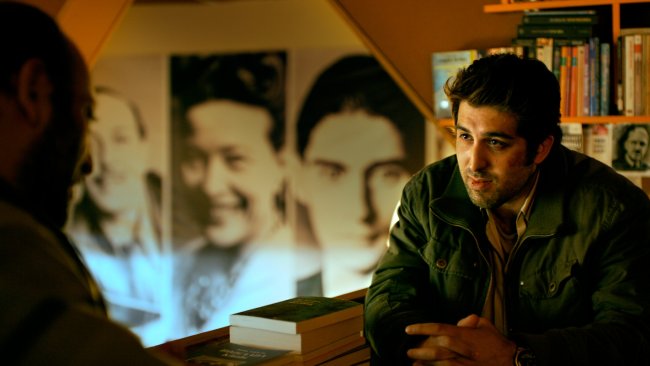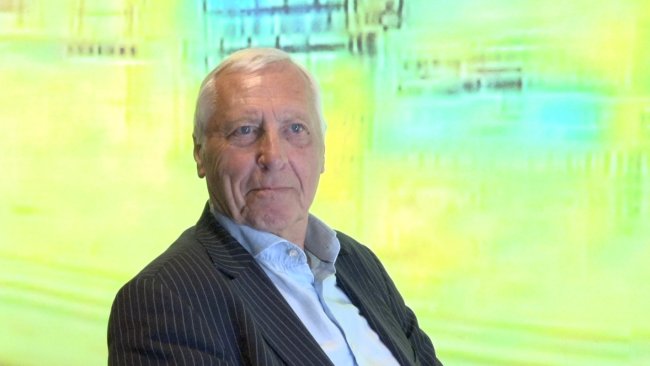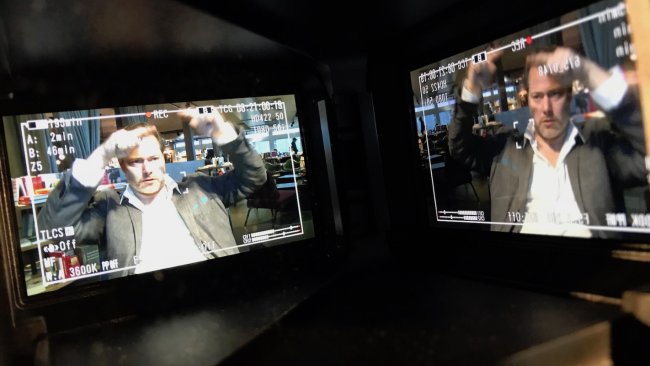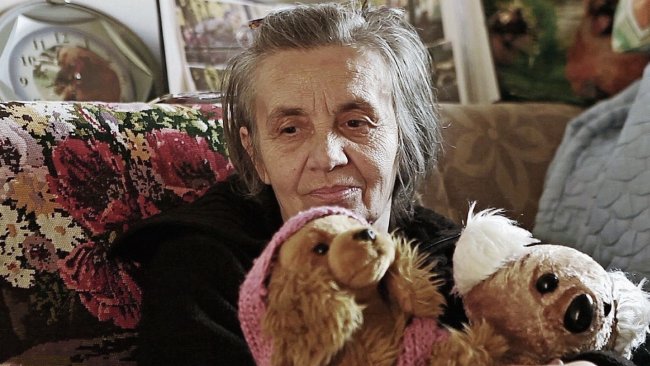Yujin Choi on South-Korean Animation
In occasion of the Focus on South-Korean animation films at the Festival Fantoche Baden 2023, Giuseppe Di Salvatore has discovered the four short films programmes and discussed with the curator Yujin Choi about her selection, her role, and Korean animation.
Text: Giuseppe Di Salvatore
Interview with the curator Yujin Choi
Giuseppe Di Salvatore (GDS): Yujin, when the Fantoche festival invited you to curate a programme of Korean animation films, which was your first, immediate idea, or something that you found urgent to put forward?
Yujin Choi (YC): 올해 초에 처음 프로그램 논의를 시작했기 때문에 정확하게 기억나지는 않는다. 그러나 한국 애니메이션이 가지고 있는 특징과 다양함을 보여주고 싶었고, 한국 작품의 매력을 느낄 수 있는 작품들을 보여주고 싶다고 생각했다.
I don't remember exactly because I first started discussing the programme earlier this year. However, I wanted to show the characteristics and diversity of Korean animation, and I wanted to show the works that make you feel the charm of Korean art.
GDS: I imagine it has been difficult for you to find the perfect synthesis that can represent a whole tradition of animation in South-Korea, and a flourishing community of filmmakers and artists. Which has been the main criteria you used?
YC: 나는 한국독립애니메이션협회에서 2006년부터 일을 하고 있다. 독립애니메이션 감독들의 네트워킹을 위해 만들어진 협회는 2005년부터 인디애니페스트 영화제를 개최하였고, 2010년부터 애니메이션 배급사업을 ‘씨앗’이라는 이름으로 진행해왔다. 협회, 영화제, 배급 사업을 통해 한국의 독립애니메이션 네트워크가 구축되었고, 이러한 업무를 진행한 경험은 이번 프로그램을 만드는데 큰 밑바탕이 되었다.
물론 작품 한 편 한 편이 모든 것을 종합적으로 보여주기는 어렵다. 그러나 그 시대의 주요 작품들을 모아놓음으로서 관객들은 어떠한 흐름의 변화를 확인할 수 있을 거라 생각했다. 히스토리 프로그램을 통해 주요 작품이 큰 줄기처럼 있고, 함께 프로그램한 사회적 메시지를 전달하는 프로그램과 여성 프로그램이 한국 애니메이션의 특징들을 받쳐줄 수 있다고 생각했다.
I have been working at the Korea Independent Animation Filmmakers Association since 2006. The association, created for the networking of independent animation directors, has held the Indie-AniFest since 2005, and has been conducting an animation distribution business under the name of AniSEED since 2010. Korea's independent animation network was established through associations, film festivals, and distribution projects, and the experience of carrying out these tasks was a great basis for creating this programme.
Of course, it is difficult for such a programme to show everything comprehensively. However, by collecting the major works of that era, the audience could see the changes in the flow. Through the historical programme, I thought that the main works were like big stems. Then, the women's programme and the one that conveys social messages can together highlight the characteristics of Korean animation.
GDS: Can you tell us something more about the choice of the two programmes that are dedicated, respectively, to political and social issues and to female signatures?
YC: 한국의 애니메이션 작품을 해외에 소개할 때 가장 많이 듣는 말 중 하나가 ‘스토리텔링’과 ‘메시지’이다. 실제로 한국의 감독들이나 관객들도 작품을 보면서 작품의 의미나 메시지에 대해 많이 이야기한다. 한국의 독립애니메이션에서 ‘메시지’가 중요하게 된 이유는 90년대 작품들의 제작 배경에 민주화운동이 놓여있기 때문이기도 하다. 그러한 점에서 사회 이슈들에 대한 작품들이 한국 작품의 주요한 주제가 되었다고 생각해서 이 이슈를 선택하였다.
최근 한국에서도 다양한 영화제에서 여성 섹션을 만들기도 한다. 그러나 종종 ‘여성’이라는 이름의 프로그램이 여성의 문제나 젠더 이슈로 국한되지 않았으면 하는게 나의 바램이었다. 그래서 여성 섹션이지만, 말그대로 여성 감독들이 만드는 작품들을 모았다. 여성들 역시 한 사회의 구성원으로 다양한 목소리를 내고 있기 때문이다.
One of the most frequently heard words when introducing Korean animation works abroad is "storytelling" and "message." In fact, Korean directors and audiences also talk a lot about the meaning and message of the works while watching them. The reason why "message" has become important in Korean independent animation is that the democratization movement lies in the background of the production of works in the 1990s. In this regard, I chose this issue because I thought that social issues became the main theme of Korean works.
Recently, various film festivals in Korea have created women's sections. However, it was my hope that often programmes dedicated to “women” would not be limited to women's problems or gender issues. So it is a women's section but it's literally a collection of works made by female directors. This is also because women have different voices as members of a society.
GDS: Many connections, which are thematic or stylistic, bind some of the films together. Can you tell us whether some films in particular, or some authors, had an important influence within the community of Korean animators?
YC: 작가의 숫자만큼이나 다양한 영화나 작가들이 영향을 미쳤다고 생각한다. 어릴 적에는 미국이나 일본의 애니메이션을 많이 보고 자랐겠지만, 단편을 만든다고 했을 때는 보다 유럽의 애니메이션이나 미술, 문학 등 다양한 분야의 영향을 받았다고 생각한다. 창작자들은 각자의 작품을 만들고 있는게 아닐까?
I think there are as many different movies and writers that have influenced the animators as there are movies and writers. When they were young, they grew up watching a lot of animations from the United States and Japan, but when they made short stories, I think they were influenced by various sources of inspiration, such as European animation, art and literature. Aren't the creators making their own works?

GDS: Sung-gang Lee’s Ashes in the Thicket (1998), for example, struck me as having something special and specific in the style, in comparison to the other films, and appear to me to introduce a form of minimalism, of sensory symbolism and existential themes that we can find in successive films such as Da-hee Jeong’s Man on the Chair (2014), Hee-seon Kim’s The River (2015), or Jee-youn Park’s Ghosts (2019) and Eric Oh’s Opera (2020) – and I’m mentioning some of my favourite films too… What do you think about this connection?
YC: 다른 시대에 다른 배경의 감독들이다. 어떠한 연관성이 있다면, 각각의 작품이 감독의 경험이나 고민, 철학을 바탕으로 오랜 시간 숙성되어 제작된 작품이라는 점이 아닐까 한다. 이성강 감독은 아티스트로서 자신의 삶을 지속할 수 있을까에 대한 고민이 작품에 반영되었고, 정다희 감독은 어릴 적부터 가져왔던 존재론적 고민을 작품으로 풀었다고 했다. 김희선 감독도 자신이 살던 지역에서의 경험을 바탕으로 작품을 만들었다. 박지연 감독은 남녀의 관계에 대한 작품을 지속적으로 만들어왔고, 에릭 오 감독 역시 현대 사회에 대한 풍자적인 작품을 계속 만들어왔다. 오랜기간 가져왔던 고민들의 깊이가 이러한 작품을 만들지 않았나 싶다.
They are directors from different backgrounds in different times. If there is any connection, it may be that each work has matured for a long time based on the director's experiences, worries, and philosophy. Director Sung-gang Lee said that his concerns about whether he can continue his life as an artist were reflected in the work, and director Da-hee Jeong solved the ontological concerns she had brought from childhood with his work. Director Hee-seon Kim also made the work based on her experience in the area where she lived. Director Jee-youn Park has continuously created works on relationships between men and women, and director Eric Oh has also continued to create satirical works on modern society. I think the depth of the worries that have been brought about for a long time made the strength of those works.

GDS: Social pressure, mainly within the context of education and work, on one side and the political traumas of the past on the other seem to constitute one specificity of Korean films – probably even beyond animation films. What about a stylistic “Korean” specificity? Can you say that there is something like that, in the past and/or today?
YC: ‘한국적’인 것이 무엇이냐고 했을 때, 나는 그것을 그냥 다름이라고 이야기하고 싶다. 미국이나 일본, 유럽과는 또다른 스타일이 분명히 존재한다. 그러나 나는 그것을 아직 ‘이것이다’라고 정확히 표현하기 어렵다.
When asked what is “Korean”, I would say “it's just different”. There is definitely a different style from the United States, Japan, and Europe, but I still find it difficult to describe it exactly as “this is it”.
GDS: And what about the connection between communities – or schools – of animation, for example the Japanese one and the European one (yeah, I imagine more the Western than the Eastern one in Europe…)?
YC: 애니메이션 감독들과 이야기해보면, 어릴적에 미국이나 일본 애니메이션을 보고 애니메이션 감독의 꿈을 꾸기 시작했다고 많이 이야기한다. 그렇게 꿈을 키워 학교에 들어가게 되면, 학교에서 새로운 애니메이션을 만나는데, 그것이 대부분의 유럽의 애니메이션이다. 동유럽이 애니메이션 강국임에도 불구하고, 한국에서는 서유럽의 애니메이션이 더 많이 알려져있다. 물론, 과거에는 학교에서 단편 애니메이션의 역사와 같은 고전적인 작품들을 많이 보여주고 그러한 작품에 영향을 받기도 했다. 그러나 최근에는 수업시간에 보여주는 작품보다는 유튜브나 비메오와 같은 영상 사이트를 통해 동시대의 작품을 보고 영향을 받는다는 생각이 든다.
As I said before, when I talk to animation directors they often say that they watched American or Japanese animations when they were young and began to dream of becoming an animation director. If you dream like that and enter school, you meet a new animation at school, which is most European animation. Although Eastern Europe is an animation powerhouse, Western European animation is more known in Korea. Of course, in the past, schools showed many classic works such as the history of short animations and were influenced by such works. However, recently, I feel that people are more influenced by watching contemporary works through video sites such as YouTube and Vimeo rather than works shown in class.

GDS: Can you tell us something about Hee-yoon Hahm’s astonishing Epicenter (2022), a both perfect and puzzling film that challenges the idea of animation itself? It seems to me a sort of foreign and beautiful meteor within the panorama of animation. Or is it a symptom of a new freedom concerning styles and genres in animation?
YC: 당신의 말대로 나에게도 완벽하면서도 혼란스러운 영화였다. 극사실적인 그림체, 조용한 가운데의 움직임. 하나의 움직임이 만들어내는 파동. 알 수 없는 오묘함이 작품 속으로 빠져들게 만드는 작품이었다. 애니메이션의 의미를 확장하기 위한 질문을 던지는 작품이었다. 현재 함희윤 감독은 같은 기법의 연필 드로잉으로 신작을 만들고 있다. 어떠한 작품이 나올지 기대가 된다.
As you said, it is a perfect and confusing movie for me too. A hyper-realistic style of drawing, movement in the middle of silence, a wave produced by a motion. It is a work that makes unknown subtleties fall into the film; a work that raises questions in order to expand the meaning of animation. Currently, director Hee-yoon Hahm is making a new work with pencil drawings with the same technique. I'm looking forward to what kind of work will come out.
GDS: Yujin, as leading personality of the AniSEED, you’re quite involved in distribution, a delicate and fragile domain for animation films (probably beside the channels explicitly dedicated to children). AniSEED also has an institutional background because it is operated by the Korean Independent Animation Filmmakers Association (KIAFA). From your experience, which are the main challenges of distribution of animation films today? What would you select as the most urgent task?
YC: 처음 시작은 독립애니메이션 작품들이 사라지지 않도록 관리하고 보존하는 것에서 출발했다. 이러한 의미는 여전히 유의미하다고 생각하지만, 이제는 독립애니메이션 배급이 어떻게 확장될 수 있을까에 대한 고민이 있다. 여전히 많은 사람들이 애니메이션은 아동용이라고 생각하는 상황에서, 독립애니메이션이 가지고 있는 예술성과 가능성을 어떻게 포장해서 대중들 앞에 보여줄 것인가가 고민이다. 특히 지금의 관객들은 예전과 다르게, 절대 다수가 좋아하는 어떤 것만을 찾는다기 보다는 창작자 개개인의 독창성과 나만의 취향을 중요하게 생각하는 경향이 있다고 생각한다. 물론, 가장 시급한 과제는 작품 배급을 통해 창작자들이 먹고 살 수 있는 수익 모델을 찾는 것이겠지만, 이를 위해서는 인식의 개선과 적절한 표현 능력이 필요하다고 생각한다.
The first start was to manage and preserve independent animation works so that they do not disappear. I think this task is still significant, but now there is a concern about how independent animation distribution can be expanded. At a time when many people still think that animation is for children, it is a question of how to package the artistry and possibilities of independent animation and show it to the public. In particular, I think audiences today, unlike in the past, tend to value the originality and individual taste of the creator rather than looking for something that the absolute majority likes. Of course, the most urgent task will be to find a profit model that creators can live on through the distribution of works, but I think this requires improved awareness and appropriate expression skills.
GDS: Let’s finish with your favourite film in the selection you’re presenting here at Fantoche festival. Don’t hesitate to pick the one that you do not necessarily have a wise reason to like. For me, for example, even if I am not properly fan of children films, Hyun-mi Lee’s Dreamer Roccy (2019) has something magic in the rhythm, like a therapeutical balm…
YC: 하나만 고르는 것은 너무 어렵다. 나는 각각의 작품이 갖고 있는 매력이 다르다고 생각하기 때문이다. 다만, 그래도 하나 골라야한다면 Afternoon Class를 고르겠다. 새로운 작품을 만나는 것은 늘 신나는 일이다. 내러티브 중심의 작품이 많은 한국에서 특별한 내러티브 없이 ‘졸립다’는 상황 하나만으로 이렇게 유쾌한 작품을 만들 수 있는 감독은 Seoro Oh 감독이 처음이었던 것 같다. 볼 때마다 즐거운 기분이 드는 것은 어쩔 수 없다.
It's too hard to choose just one. This is because I think each work has a different charm. However, if I still have to choose one, I will choose Afternoon Class. It's always exciting to meet new works. In Korea, where there are many narrative-oriented works, director Seoro Oh seems to have been the first director to be able to create such a delightful feel with just the situation of "being sleepy" without any special narrative. I cannot help but feel happy every time I see it.
GDS: Thank you very much, Yujin, and we hope to welcome you back to Switzerland soon!
YC: 영화제에서 좋은 관객과 감독들을 만났다. 작품에 대해 공감해주고, 이야기해주는 많은 사람들을 만났다. 영화제를 찾은 한국의 게스트들에게는 응원과 위로의 시간이기도 했다. 온천은 치유의 시간이기도 했다. 다음 작품으로 다시 판토체에서 관객들을 만났으면 하는 바램이다.
I met good audiences and directors at the film festival. I met a lot of people who sympathized and talked about the works. It was also a time of support and comfort for Korean guests who visited the film festival. The hot spring was also a healing time. I hope to meet the audience again in Fantoche with my next work.
Info
Curated Programme of Korean Animation Films | Curator: Yujin Choi | Festival Fantoche Baden 2023
More Info
The four short film programmes:
History of Korean Independent Animation
Illumination Window to the World
Women and Animation
Colourful Dream
First published: September 17, 2023







